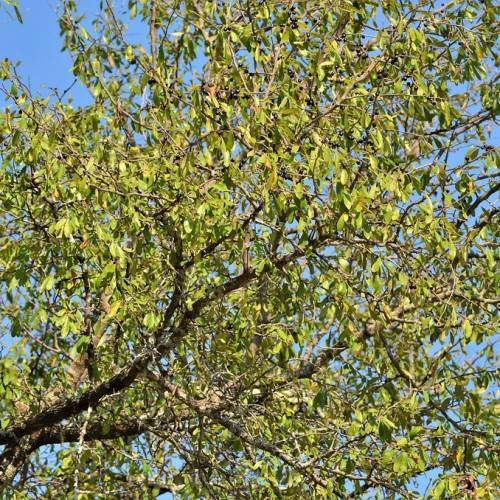
chittamwood
Sideroxylon lanuginosum
Cycle:
Perennial
Watering:
Minimum
Hardiness Zone:
6 - 10
Flowers:
Flowers In Summer
Sun:
Full sun,part shade
Fruits:
Fruits Ready In
Leaf:
Yes
Growth Rate:
Low
Maintenance:
Low
Drought Tolerant:
Yes
Salt Tolerant:
Yes
Care Level:
Medium
watering
Chittamwood should be watered about twice a week -- usually at the beginning and end of the week or every 4 or 5 days. The amount of water given should be enough to keep the soil lightly moist, but not so much that it is inundated with water.When watering, make sure there is adequate drainage by checking the soil before adding more water. If the soil is dry, Add enough water to make the soil wet, but not flooded or too wet. If the soil feels damp, hold off on the water until the soil feels slightly dry. Over-watering can cause root rot, drainage problems, and nutrient deficiencies.
sunlight
Chittamwood (Sideroxylon lanuginosum) is a species of small shrub that thrives in full sun. It can tolerate some shade, but it produces the most vibrant flowers with direct sunlight. This sun-loving plant requires 6 to 8 hours of direct sunlight every day. The most important times of the day for sunlight are early morning hours and mid-afternoon, when the sun is at its brightest. This species also benefits from indirect sunlight the rest of the day. Chittamwood should be planted in an area that receives direct sun throughout the day, making sure to ensure that no large trees are casting shade on it.
pruning
Chittamwood,or Sideroxylon lanuginosum, should be pruned twice a year;once in spring and once in late summer/early fall. In the spring, prune out any dead and diseased branches and branches that are growing too close together. This will help promote aeration and good air flow through the canopy of the tree. At this time, it can also be beneficial to thin out some of the canopy if it is very dense. Be sure to leave a few larger branches at each level to maintain the structure of the tree. In late summer/early fall, prune lightly and selectively remove any smaller, thinner branches that are growing up through the canopy or branching off from larger limbs. This pruning should be less extensive than the pruning done in the spring, as the tree is gearing up to go dormant. Finally, both in spring and late summer/early fall, always remove damaged, dying, or diseased branches promptly with sharp, sterile tools. As a general rule, pruning should take no more than 1-third of the tree’s foliage. In sum, Chittamwood should be pruned twice a year;once in spring and once in late summer/early fall. Be sure to remove any dead, diseased, or damaged branches and to thin out the canopy if it is dense. In the early fall, prune lightly and reduce the foliage by no more than 1-third of the tree.
